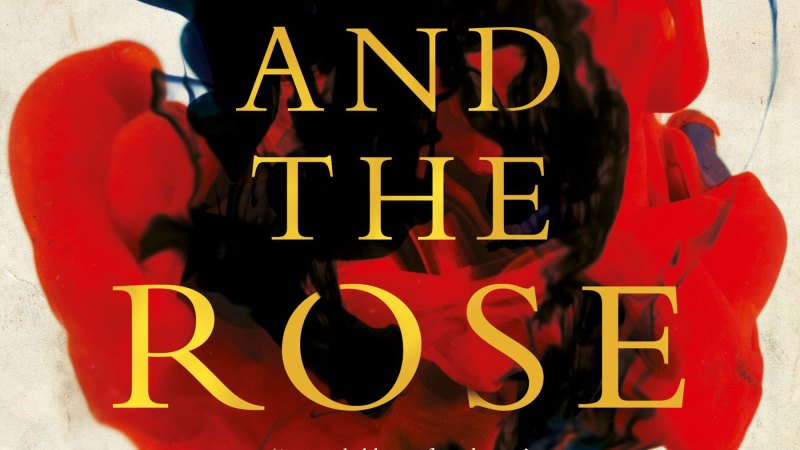SPOILER ALERT: This story contains spoilers for “Sanctuary,” in theaters now.
At first glance, Zachary Wigon’s new film “Sanctuary” might seem simple — it was shot in 18 days in a 1,200 square foot room with a two-person cast, after all. But within those four walls lies a complex and wildly entertaining tale full of sex, humor, dominion and desire.
The dark comedy-thriller tells the story of Rebecca, a dominatrix played by Margaret Qualley, and the complicated power dynamic she has with her client, Hal (Christopher Abbott), who is the new heir of his father’s lucrative hotel business. Because of the confidence she’s brought Hal through her sex work, Rebecca believes she’s entitled to part of his fortune. Hal disagrees.
Over the course of one long night, “Sanctuary” layers roleplay on top of reality to blur the actuality of power. The audience is constantly questioning who is really in charge in the midst of the film’s sexual heat: the demanding and dominating Rebecca, or the rich and biddable Hal?
But before Abbott and Qualley ever assumed these roles, “Sanctuary” was a one-act play that the film’s screenwriter, Micah Bloomberg, wrote back in 2007.
“It was about a hotel heir and this woman that he has a relationship with,” Bloomberg tells Variety. “She is humiliating him in his hotel room, and you don’t realize at the beginning of the play the reality of their interaction… At the heart of it was this really fucked up dynamic that is very scary and strange. Maybe scary isn’t the right word. But it turns out to be what they need in their lives, in this weird way.”
While working with Wigon on the 2018 series “Homecoming,” Bloomberg discovered that he was interested in making a film about a dominatrix, so he sent Wigon the play. It was originally titled “We Here At” as in, “we here at this company take our job very seriously,” but Wigon was adamant on calling the film “Sanctuary,” after the safe word used in the screenplay.
As for where the safe word came from, Bloomberg recalls watching Disney’s “The Hunchback of Notre Dame,” specifically the scene where Quasimodo saves Esmeralda from being hanged, lifts her up, and repeatedly shouts, “Sanctuary!”
Bloomberg claims he has no idea how he made that connection, but it becomes clear in his goal for the story. He aimed to write a film that centered on the characters’ desires and what they could get from one another, rather than one that passed judgment on their sexual choices. He needed to create an intimate place where Hal and Rebecca could figure out what they needed from this sexual relationship — in other words — a sanctuary.

Still, despite creating a story with such a fresh perspective on sex, he says he doesn’t want to be credited for attempting to make a sex-positive movie.
“As far as themes and what it’s going to mean to people, all that just kind of comes up through the cracks for me,” he says. “You don’t want to judge the characters. You want to see it from their perspective. If the movie is all about casting some social or cultural judgment or the economics of what they’re doing, and isn’t about how they feel and what they’re trying to get from each other, then I just think it’s going to be boring.”
And so Bloomberg thought, “What if these sadistic sex acts were good for them?” And thus, the film’s “happy ending” was born, in which Rebecca and Hal fall in love.
Still, this happy ending comes as a twist. Amidst the indecipherable role playing and power struggles between them, an ending where they fall in love is anything but predictable. When writing Qualley’s character, Bloomberg reached far out into the depths of possibility to create a woman who would shock the audience over and over.
“It was like, ‘What’s the craziest thing that a person could do or say in this situation?’ And then it’s almost like the movie has this permission structure for her to do that,” he says. “So from my perspective, it was just like, ‘How far can I push this?’”
He also gave credit to Wigon, Qualley and Abbott for translating his play into something so enticing.
“This would not have worked with different actors. Margaret was able to make something that doesn’t make sense, make sense. And Chris gets laughs from cutaways from him listening. That’s not writing, that’s just Chris doing his thing,” he says.
As for Wigon, Bloomberg says his choice of camera techniques and ability to use every inch of the confined space is another reason the film didn’t turn out boring. He recalls a time when he and his mom watched Roman Polanski’s “Death of the Maiden,” which was also shot in one room.
“After it was clear to my mom that they weren’t going to leave the location, she just got up and was like, ‘I’m not gonna watch this.’ So I think to Zach’s great credit, ‘Sanctuary’ does not feel like one of those films, or it feels the least like one of those that it possibly could,” he says.
Since he couldn’t leave the hotel room, Wigon decided to tunnel in the opposite direction.
“You can’t go anywhere externally, so you have to go deeper into their heads,” Wigon says. “Not to reference another film that could be seen as in this broader universe, but you want as many ‘shades of grey’ as possible in terms of characterization and nuance. The more shades of grey that you can find there, the more beats you can explore.”
When directing “Sanctuary,” Wigon thought back to some of his favorites films, screwball comedies like “His Girl Friday” and “Bringing Up Baby.”
“I’ve always found it fascinating how they’re so funny and light but the characters are also, like, completely awful too. They do terrible things to each other,” Wigons says. “But it’s all played for laughs.”
Given the film’s BDSM storyline, he considered how erotic and psychological thrillers also teeter between seriousness and comedy.
“It was almost this idea of, well, maybe this movie could exist in that hidden tunnel between the screwball comedy and the erotic or psychological thriller,” he says.
With the help of Bloomberg’s story and Wigon’s direction, Abbott found an Albert Brooks-level of comedy in his performance that helped bring this idea to life.
“If you commit to a thing and play something seriously, then in turn, it’s actually funnier than if you tried to play it funny. I think that’s the kind of fine line you got to do with this one, which makes it uproariously hilarious,” Abbott says.
Abbott and Qualley had known each other for a while before shooting the film, and were in search of a project to do together. Abbott says working with Qualley was easy, and that the chemistry just developed as they went along.
“We almost went into it like we were doing a play, and I think it sort of took care of itself in that way,” he says.
Qualley echoed these feelings in a Q&A following an early screening of the film. “The more boundaries you’re given, oddly the more freedom that comes. I learned this film front to back word-perfect…and Zach blocked it to a tee,” she said. “It was like a paint-by-number. So long as you’re painting by the numbers you can do whatever you want in that set of rules.”
As for bringing the film back to the stage in the form of a Broadway play, Wigon and Bloomberg say they’d be interested in seeing that happen — but the actors are less sure.
“I mean, theater is not my realm of expertise,” Wigon says. “But I think that certainly it has all the makings of a stage play. Right? If you look at the–” But Abbott interjects: “I’m not doing this as a play. There’s no chance.”

Read More About:
Source: Read Full Article


